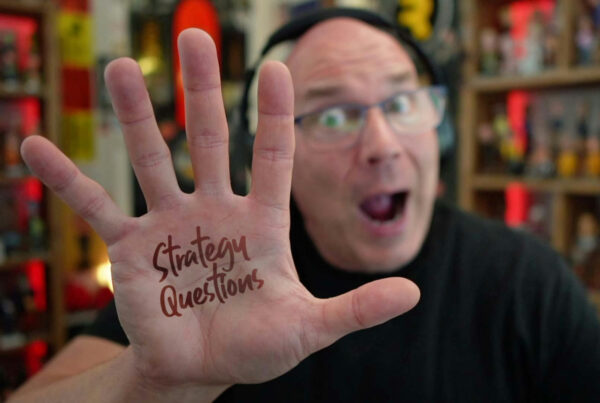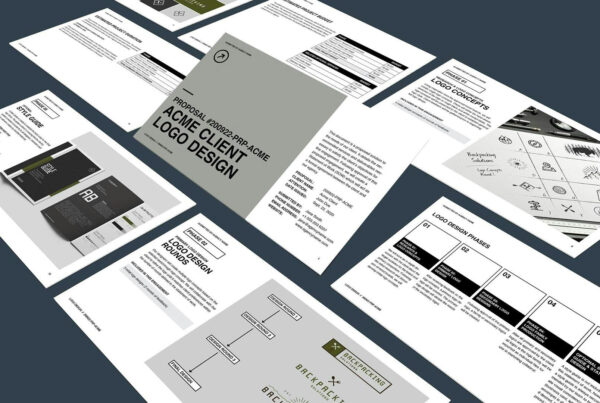These 08 Common Mistakes Are Causing Damage to Your Creative Business
I started freelancing 22 years ago. (Holy freak, how has it been that long?) You may know my story, but in one summary statement: My freelance business took off and grew into an agency that I sold in 2015. I made every mistake in the book. In fact, most of my content comes from the lessons I learned making the mistakes I made.
Over the past few years, I have coached hundreds of creative entrepreneurs in thousands of one-on-one coaching sessions, and I have seen my same mistakes replicated across many other freelancers and agency owners. Here are eight of the biggest mistakes I see creative entrepreneurs make. (If you feel called out by any of these, take note and make some changes. Solving them will improve your business!)
1. You’re Afraid to Talk to Clients
You hide behind emails and direct messages instead of getting on phone calls, video calls, and face-to-face meetings. Don’t get me wrong; written communication is important too; however, it should only be part of your interaction with your clients. Trust and relationships are built through human-to-human connections, and corresponding primarily through written communication makes you no different than the next-gen A.I.
2. You’re Guessing on Your Prices
A client wants a price. You look up into the corner of your eyes, scrunch your face a little, and pull a number out of the deep reservoirs of your brain. If that is your pricing strategy, you can do better. I encourage creatives to price based on the analysis of your production cost, market pricing, and an understanding of the client’s budget. Pricing should be done through methodical analysis followed by your business intuition, not guesswork.
 3. You’re Emailing Proposals without Presenting Them First
3. You’re Emailing Proposals without Presenting Them First
This one thing has the power to transform your entire business. No more emailing proposals. Have a discovery meeting with your potential client, create your proposal, and then PRESENT IT to your client. You can answer questions real-time, resolve their concerns, properly gauge their interest, and discuss possible scope modification all in one meeting. You will win more projects if you present your proposals (and then email them a copy AFTER the meeting).
4. You’re Saying “Yes” to Bad Clients
You have a potential client on the hook. Your Spidey-sense is going crazy warning you of danger, but hey, you need the money so you decide to do the work anyway. You quickly learn that you should have listened to your Spidey-sense and turned down the project. Loss of money and a dip in your mental health are your reward. I have never regretted saying “no” to a client, but I have regretted saying “yes.” Don’t be afraid to say “no.”
 5. You’re Working Without a Written and Approved Agreement
5. You’re Working Without a Written and Approved Agreement
“The project budget is small.”
“The client is a good friend.”
These are a couple of your justifications in proceeding with a project without any written agreement of what it will cost and exactly what you will do. It is true that in some cases you may proceed without a big formal agreement PDF, but you AT LEAST need to document the scope and price (even if it is free) in an email to the client so that you all have something in writing. Memories fail, but written documentation doesn’t. Never do any work without some type of written agreement, as simple as it may need to be.
6. You’re Letting Clients Change Scope Without Changing Price
You start the project with excitement. Oh man, you really needed the money. After a couple of days, the client asks for “one small addition” to the project scope. You oblige so as to not ruffle any feathers. The next week they add something else. It’s hard for you to charge for the second request because you didn’t charge for the first. Before you know it, you have properly trained the client that they can change the scope anytime they want with no consequence. You are upside down in profit and miserable. Unfortunately, you did it to yourself. Don’t be afraid to create a change order or contract addendum to charge clients for a change in scope.
 7. You Are Running Your Business Without Tracking Data
7. You Are Running Your Business Without Tracking Data
This problem is a common thread in all my content. You need to look at your numbers and make business decisions based on business data. Tracking data can help you predict the future of your business by looking at the past. My most valuable agency data points were: Number of Proposals Submitted, Number of Proposals Won, Average Price Per Proposal Won, Revenue vs. Expenses. But those are just a starting point. You’ll find tons of other advice about tracking business data riddled throughout my content.
8. You’re Afraid to Sell
Stop being afraid to sell. This is hurting your business…like major damage. “Selling” doesn’t make you seem like a used car salesman. You need to realize that your creative services business exists to help your clients improve their business. If you don’t offer up your services to potential clients, you are denying them the help they need to land more customers and increase revenue. Ask your client for more projects. Ask your clients for referrals. Ask people you meet if they know anyone who might need your services. Do it because you are trying to help other businesses succeed, not because you “need the money” for your business. That subtle shift in perspective can help you get over your fear of selling.
Which of these mistakes are you making? Are you going to start fixing it now?







